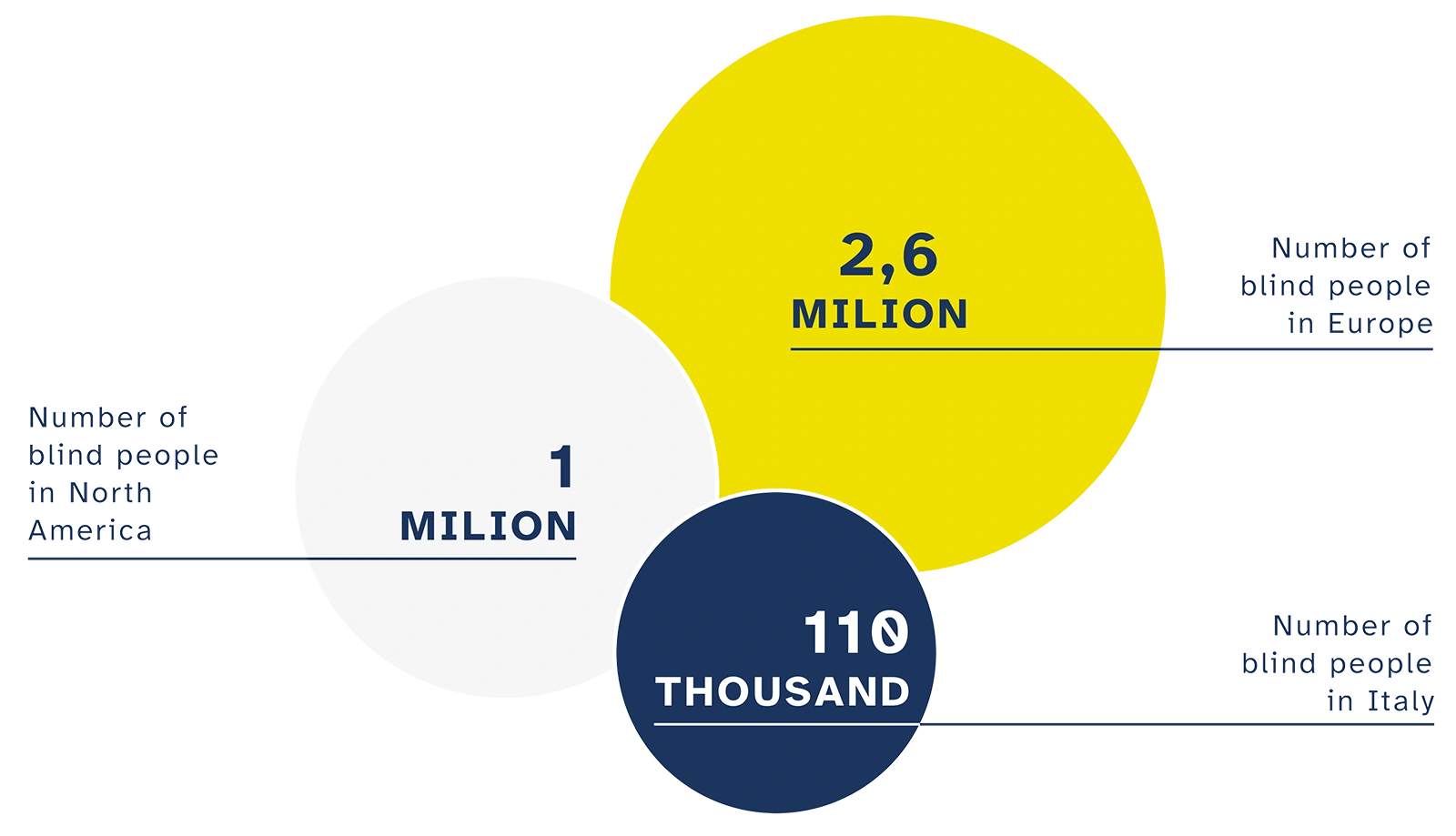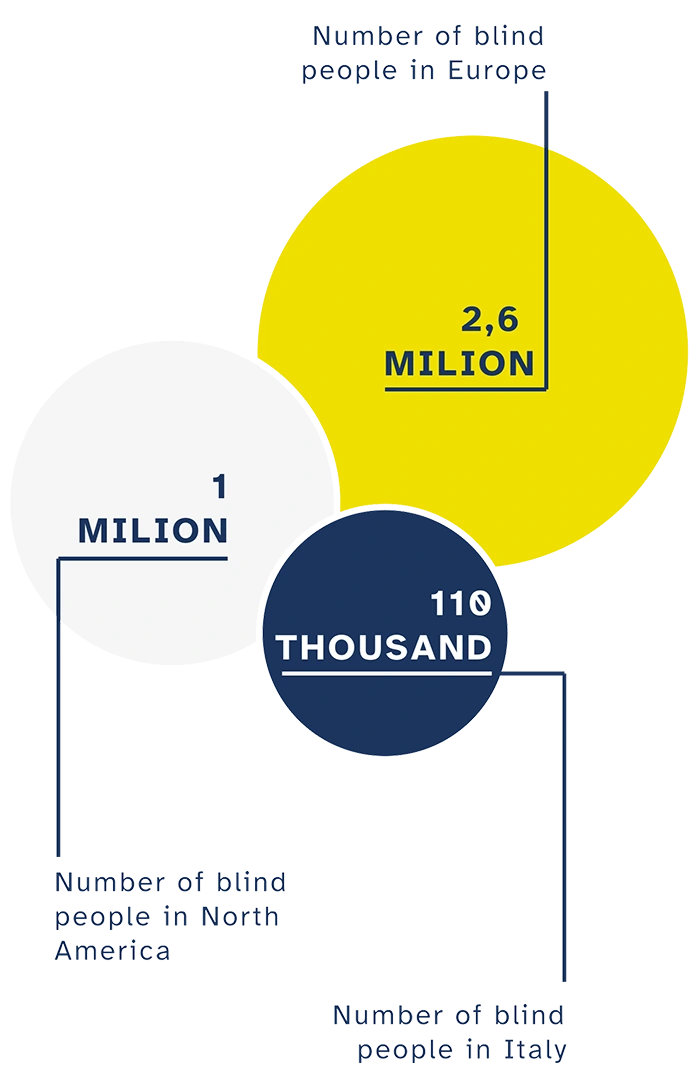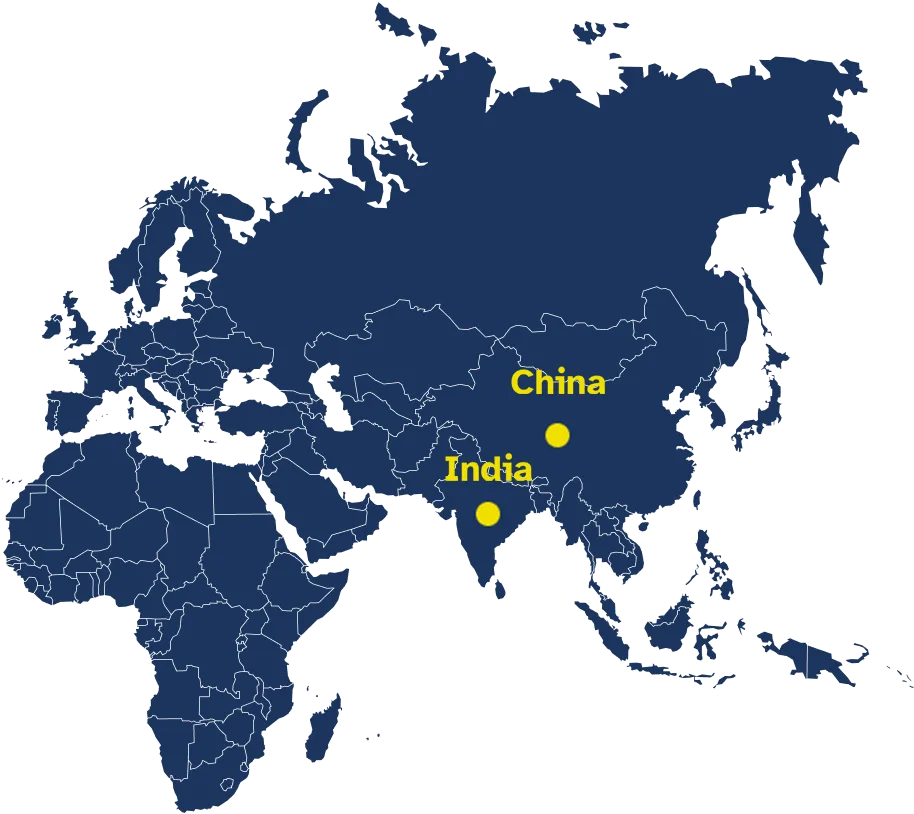THE CONTEXT
Blind individuals around the world face significant challenges, particularly when it comes to mobility and environmental awareness. Traditional aids such as guide dogs, white canes, and Braille systems remain fundamental for safety and autonomy but are limited in dynamic and complex outdoor environments. Despite advancements in assistive technology, existing solutions are primarily focused on indoorapplications, leaving outdoor mobility largely underserved. This has created a “mobility gap,” constraining the independence of blind individuals and increasing the risk and discomfort of daily outdoor navigation. Research and user surveys reveal a strong desire for wearable aids that allow hands-free operation and can detect and communicate obstacles before contact. The demand for advanced, user-centered assistive technology that enables safer and more independent navigation is clear and increasing.


GEOGRAPHIC
DISTRIBUTION
The majority of blind individuals live in countries like China and India, and surprisingly, 90% of them reside in low- and middle-income nations.
These statistics highlight the urgency of addressing the challenges related to blindness and the importance of developing technological solutions that can improve the quality of life for these individuals.

Future Projections
By 2050, a significant increase in the global population of blind individuals is expected. It is surprising to discover that 90% of cases of blindness could be prevented, paving the way for meaningful initiatives.
from 43 million
to 61 million
iSee One is designed to enhance mobility for blind individuals by providing real-time environmental awareness through advanced sensor technology and intuitive feedback, bridging the gap between traditional mobility aids and modern assistive solutions.
The prevalence of blindness remains relatively stable, with a slight majority of female users compared to male users.
